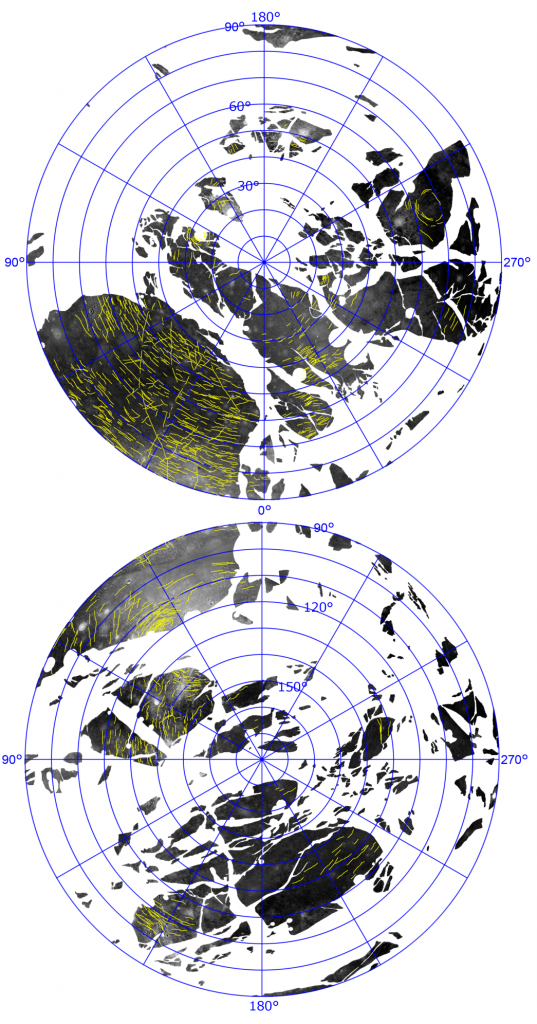
From astronomers trying to sort out why stars misbehave to planetary scientists struggling to understand how objects of the same mass and composition can have different geology, we aren’t very good at letting mysteries stay mysteries.
We round out today with a new paper in Icarus with lead author Naoyuki Hirata of Kobe University. Researchers reanalyzed image data from the Voyager 1, Voyager 2, and Galileo spacecraft on Jupiter’s largest moon, Ganymede, and specifically looked at formations called furrows, which are troughs found only on the Dark Terrain of the moon. This Dark Terrain is older than the Bright Terrain – yes, those are their names – and thus shows more evidence of cratering as well as all these furrows.
The team found that the furrows are laid out in concentric circles around a single point on the surface, suggesting that one single impact is responsible for an extremely large multiring crater that covers almost the entire surface of Ganymede. The crater has a radius of 7800 kilometers, which is four times longer than the next largest crater in our solar system. That crater, found on Jupiter’s moon Callisto, has a radius of a mere 1900 kilometers.
Callisto is nearly the same size as Ganymede; however, it does not have the same internal structure. Callisto does not have differentiated layers, while it is thought that Ganymede has layers of rock, iron, and ice. According to a Kobe University article: An enormous amount of heat is necessary to form these differentiated layers. It is possible that the aforementioned large scale impact could have been the source of this heat.
Simulations were done to estimate the size of the impact event needed to cause the multiring crater, and computational results from the PC Cluster at the National Astronomical Observatory of Japan (NAOJ) indicated that the impacting asteroid was approximately 150 kilometers in radius and traveling at a speed of 20 km/s. This impact likely occurred four billion years ago, during the period referred to as the Late Heavy Bombardment, and gives us further insight into the formation and evolution of our solar system.
More Information
Center for Computational Astrophysics press release
“A Global System of Furrows on Ganymede Indicative of Their Creation in a Single Impact Event,” Naoyuki Hirata, Ryo Suetsugu & Keiji Ohtsukia, 2020 July 15, Icarus




 Join the Crew!
Join the Crew!
 Escape Velocity Space News
Escape Velocity Space News
0 Comments